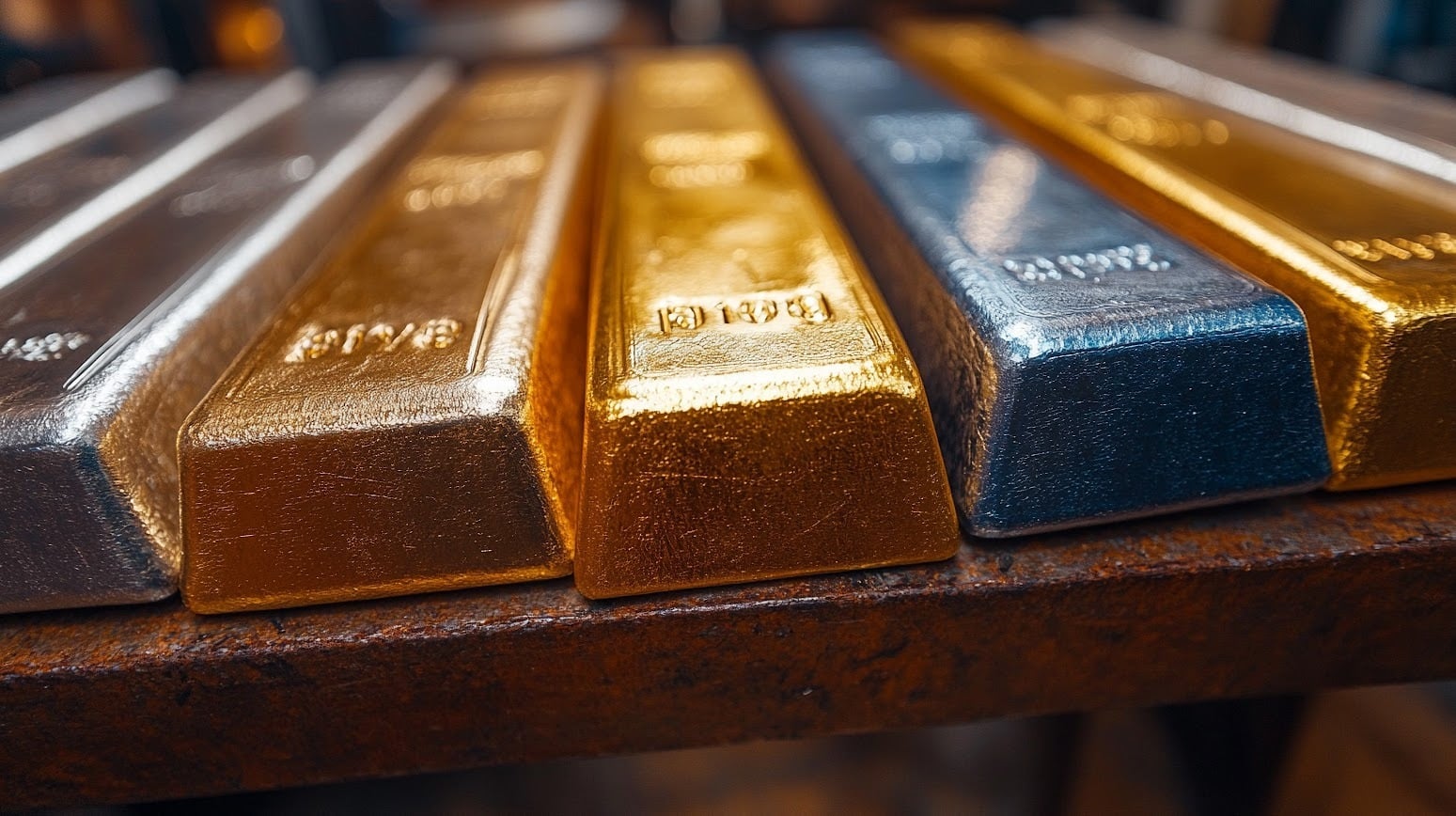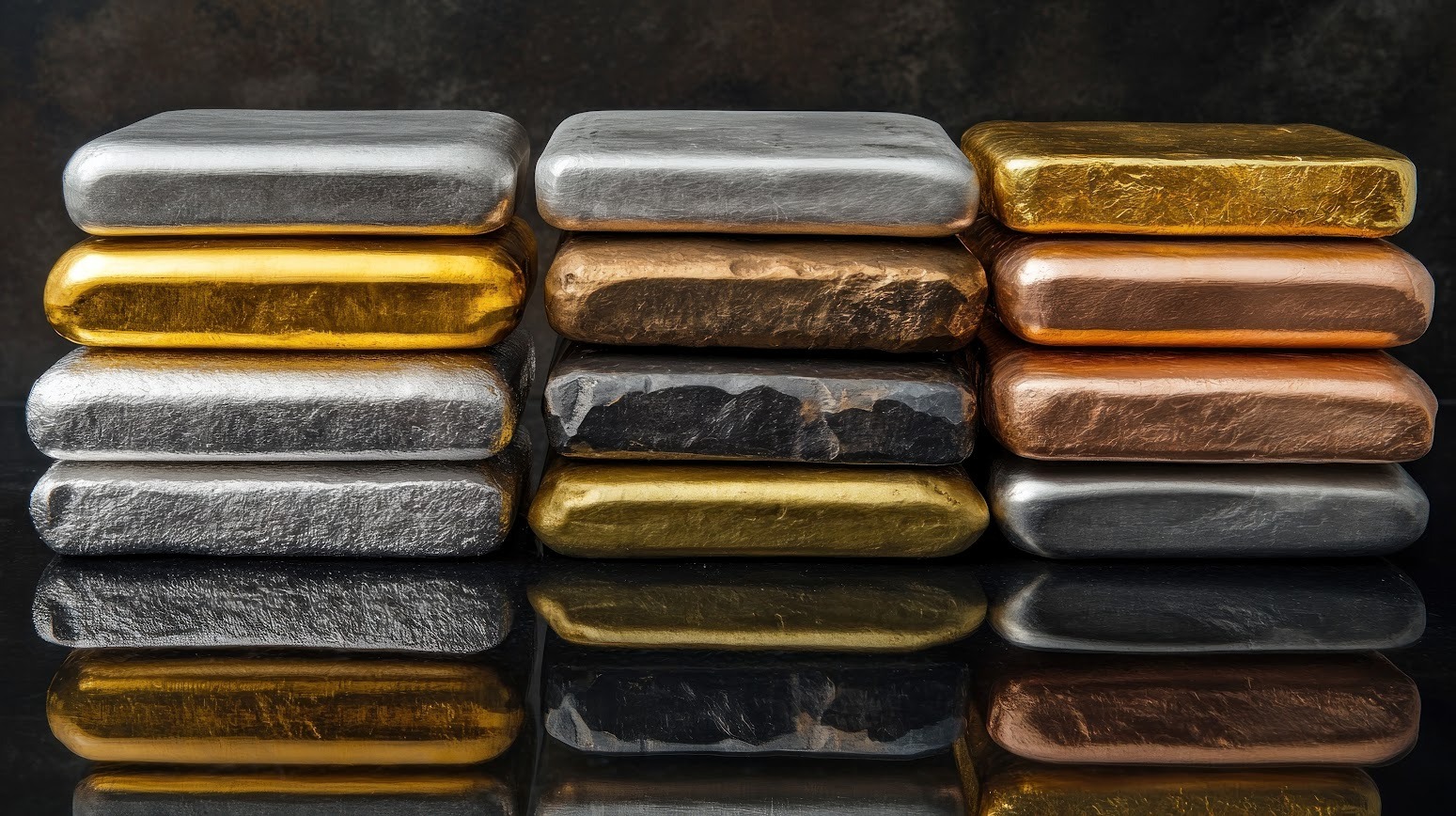Factors that affect precious metal prices
Just like everything in today’s world, a major underlying factor of precious metal prices is supply and demand. When there’s an ample supply of metals and less demand, the price decreases. When supply is low and demand is high, the price increases. While it may seem simple, many factors inside and outside of supply and demand influence fluctuations in the prices of precious metals.

Economic Influences
U.S. Dollar Strength: Since precious metals are priced in U.S. dollars, their prices are inversely related. A weaker dollar usually drives up metal prices, and vice versa.
Inflation & Interest Rates: Metals like gold often serve as a hedge against inflation. Lower interest rates reduce the opportunity cost of holding metals, making them more attractive.
Debt Levels & Unemployment: Economic uncertainty caused by high debt or unemployment can increase demand for safe-haven assets like gold.
Central Bank Stability: Central banks are monetary institutions controlled by the national government or private entities with government authorization. These banks hold precious metals in their reserves alongside foreign currency, bonds, and other low-risk options. They collectively own about one-fifth of all gold ever mined. Since precious metals are in constant demand and can be liquidated quickly, they serve as monetary insurance and provide stability during times of economic uncertainty. This allows central banks to loan or sell these assets to other nations without the credit risks associated with other assets and to profit during economic instability.
Quantitative Easing (QE): A monetary policy where central banks purchase large quantities of financial assets to inject money into the economy—QE encourages investment in higher-risk ventures. This is not physical money printing but digital credits added to a seller’s account. QE can either inflate metal prices (as investors seek safe assets) or depress them if investors pursue higher-risk opportunities due to improved liquidity.
Investment Behavior
Risk Aversion: In times of uncertainty, investors flock to metals as a safe-haven asset. When confidence returns, funds often shift back into stocks or bonds.
Exchange-Traded Funds (ETFs): ETFs and mutual funds allow investors to gain exposure to metals without physically owning them, directly influencing demand. These funds are securities that hold the metal and issue shares that investors can buy and sell, similar to stocks.
Political Factors
Political Stability: Market analysts watch elections, policy shifts, and regulation changes for potential impact on precious metal markets. Unpredictability and revolts can impact the global economy, increasing demand for safe-haven assets.
Geopolitical Tensions: Wars, trade disputes, and instability can drive investors toward metals as a safe haven asset.
Tariffs, Sanctions, and Trade Policies: Restrictions on major producers affect supply and prices, while new trade agreements can ease access and shift pricing.
Understanding these key factors and their involvement with the precious metals market can provide insight into better predicting market fluctuations and improving your investment strategies. Taking all that into account, some precious metals have other unique factors that can affect their worth—including the environmental and economic impact of recycling practices. Learn more about how recycling precious metals impacts the environment.

Gold (AU): Timeless Value
Gold stands out as a tangible, universally recognized store of value. Its scarcity, permanence, and historic status as a financial safe haven make it the go-to investment during times of crisis, including diminished currency values, inflation, and overall economic turmoil. When confidence in other financial assets declines, the value of gold rises.
Key Price Influencers
Supply vs. Demand: Unique in that new supply is small compared to total existing stock. Annual mining adds only 2–3% to global supply, making prices more responsive to changes in demand rather than production levels.
Market Demand: Jewelry (50% of yearly demand), industrial applications, and investment channels like ETFs all affect pricing.
Cultural Demand: Particularly strong in China and India, where gold serves not only as fashion but also as a symbol of wealth. Events like the Indian wedding season or Chinese New Year celebrations create predictable surges in demand.
Industrial Use: Though used in smaller quantities, gold’s conductivity and resistance make it indispensable in electronics and medical devices.
Silver (Ag): The industrial Powerhouse
Industrial Applications: Silver is used for its high reflectivity, electrical, and thermal conductivity. These attributes make silver vital in electronics, solar panels, radio frequency identification, water purification, LED chips, medicine, and more.
Gold-Silver Ratio (GSR): Traders monitor this ratio to assess relative value. When gold spikes, silver prices often rise. A high GSR means gold is more expensive compared to silver; a low ratio implies the reverse, influencing trading decisions.
Technology Trends: Growth in renewable energy and tech applications continues to elevate silver demand.
Gold & silver can go hand and hand, refining it can play a crucial role in the recycling process.
Palladium (pd): Auto Industry Dependent
Catalytic Converters: Around 85% of palladium goes into vehicle emissions control systems.
Electric Vehicles (EVs): As EV adoption rises, palladium demand could decrease since EVs don’t use catalytic converters.
Clean Air Standards: Growing global emissions regulations (e.g., in China) continue to drive palladium demand in traditional combustion vehicles.
Market Volatility: Like other precious metals, palladium is sensitive to market instability, trends, and supply disruptions. Its uses span jewelry, dental and medical equipment, and various industrial applications.
Want a deeper look into how palladium is refined and what drives scrap value? Explore our full guide to palladium refining and recycling.
Platinum (Pt): Dual Demand Metal
Platinum shares some uses with palladium but has a broader demand base.
Key Price Influencers:
- Auto Manufacturing: Also used in catalytic converters, though less than palladium in recent years.
- Jewelry Industry: Particularly in China and India, platinum jewelry demand can significantly influence prices.
- Industrial Uses: Platinum is critical in the chemical, medical, and electronic industries, maintaining a stable base demand.
- Market Substitution: As palladium prices have risen sharply in recent years, manufacturers have started substituting platinum where possible, affecting its demand.

Future Trends To Watch
Understanding emerging developments can help you anticipate market changes:
- Technology Innovations: Advances in renewable energy, the auto manufacturing industry, electronics, and battery technology could reshape demand, particularly for silver and PGMs (platinum group metals).
- Political Factors: Monitor political stability, geopolitical tensions, and trade policies, including tariffs, as these factors influence precious metals markets by affecting supply, demand, and investor confidence.
- Green Economy: As governments and industries adopt sustainable technologies, demand for metals used in solar panels and clean tech will increase.
- Economic Forecasting: Economic growth predictions, inflation expectations, and geopolitical developments will continue to guide investor behavior in the metals market.
Final Thoughts
Precious metals remain a cornerstone of diversified investment strategies. Whether you’re focusing on gold’s safe-haven appeal, silver’s industrial utility, or the unique roles of palladium and platinum in modern manufacturing, staying informed on these driving factors can give you a competitive edge.
By monitoring macroeconomic trends, policy shifts, and technological advancements, you can make more informed, strategic decisions when investing in precious metals.
Understanding these fluctuations can help you determine not only the right time to invest but also when to refine scrap material. During high price surges in precious metals, refining your metal scrap can significantly benefit your bottom line. Contact Core Scientific for a free consultation or request a container!


